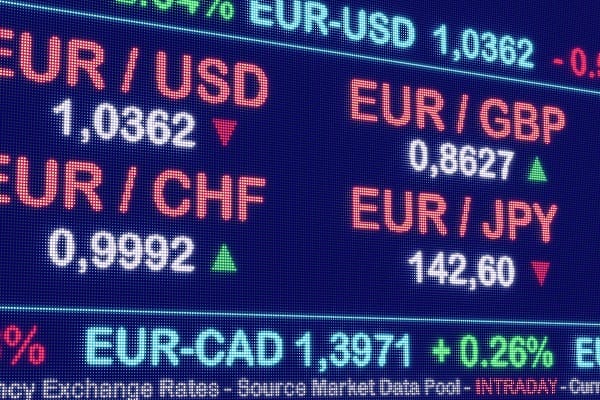The dollar index rose to a level of 104.25 from 103.65 last Friday and started trading on Monday at 104 points. Currency markets were volatile ahead of the U.S. Labor Day weekend, which lasts three days due to the Labor Day holiday today.
The increase in the U.S. unemployment rate in August to 3.8% from the previous 3.5% exerted negative pressure on the dollar, causing it to initially decline. However, it rebounded thanks to strong employment data that exceeded analysts’ expectations, with 187,000 jobs created compared to the forecasted 170,000.
The U.S. Manufacturing Purchasing Managers’ Index (ISM) rose to 47.6 from 46.4 previously, with an average expectation of 46.9. Additionally, the yield on 10-year U.S. bonds increased by 7 basis points to reach 4.18% at the close of trading in New York on Friday, while other global bond rates were mixed.
The euro fell back to 1.0785 from the Friday opening price, currently at 1.0845. The British pound also weakened against the strong U.S. dollar to 1.2595. Furthermore, the U.S. dollar gained 0.2% against the Swiss franc, reaching 0.8858.
The Australian dollar depreciated, with the AUD/USD pair ending Friday at 0.6445 from the opening at 0.6485. Wall Street stocks ended the week with modest gains, as the Dow Jones Index reached 34,798, and the S&P 500 increased to 4,512 compared to the Friday opening at 4,508. Most other global stock markets were mostly positive.
In my view, the rise in the U.S. dollar index to high levels after mixed U.S. economic data reflects the strength of the U.S. dollar and can impact the U.S. economy in several ways.
The increase in the unemployment rate to 3.8% may negatively affect the dollar, as rising unemployment can signal weakness in the labor market and economic growth contraction. However, the dollar rebounded due to strong employment data, indicating a balance in the U.S. economy.
The increase in the yields of 10-year bonds to 4.18% suggests optimism in the economy. Rising bond yields reflect increased demand for U.S. bonds and can be a sign of confidence in the strong economic growth prospects.
I also believe that the rise in the U.S. dollar index against major currencies signifies its strength against other currencies. In this case, the value of other currencies like the euro and the British pound may decline against the dollar. This dollar appreciation can affect international trade and economic relations between countries.
In the stock market, the modest rise in Wall Street markets in the current conditions may positively impact the U.S. dollar. Therefore, the conflicting data present economic challenges and raise questions about whether there is a tendency towards a soft economic recession as the Federal Reserve plans.
In this context, I see that the rise in the dollar index and mixed data reflect significant challenges and put the U.S. economy in a sensitive phase. Therefore, monitoring future developments and economic data is essential for a better assessment of the economic situation.

The dollar index (DXY) price chart on the MT4 platform by XS.com
From a technical standpoint, the markets are expected to experience a slowdown in trading activity and reduced liquidity today, as the United States and Canada observe Labor Day celebrations.
On the chart above, the dollar has rebounded, supported by the rise in U.S. bond yields on Friday, and is currently trading around 104 points, near the strong resistance level at 104.50 points.
I believe that bond yields will continue to provide support for the U.S. dollar against its competitors to varying degrees after a corrective pullback that may target 103.56 and 103.15 points. These trading ranges will remain intact unless the price breaks through these levels either upward or downward, with the possibility of further volatility in the currency market.


Leave a Comment